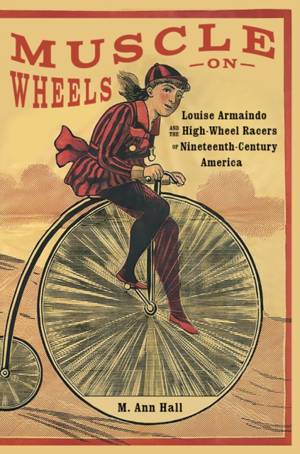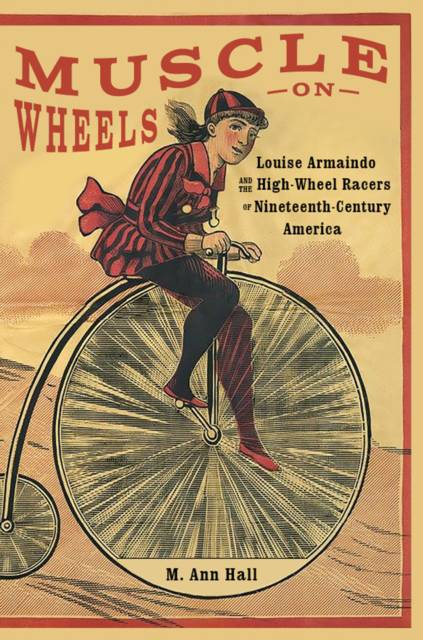
- Afhalen na 1 uur in een winkel met voorraad
- Gratis thuislevering in België vanaf € 30
- Ruim aanbod met 7 miljoen producten
- Afhalen na 1 uur in een winkel met voorraad
- Gratis thuislevering in België vanaf € 30
- Ruim aanbod met 7 miljoen producten
Zoeken
Muscle on Wheels
Louise Armaindo and the High-Wheel Racers of Nineteenth-Century America
M Ann Hall
Hardcover | Engels
€ 48,45
+ 96 punten
Omschrijving
The majestic high-wheel bicycle, with its spider wheels and rubber tires, emerged in the mid-1870s as the standard bicycle. A common misconception is that, bound by Victorian dress and decorum, women were unable to ride it, only taking up cycling in the 1880s with the advent of the chain-driven safety bicycle. On the contrary, women had been riding and even racing some form of the bicycle since the first vélocipèdes appeared in Europe early in the nineteenth century. Challenging the understanding that bicycling was a purely masculine sport, Muscle on Wheels tells the story of women's high-wheel racing in North America in the 1880s and early 1890s, with a focus on a particular cyclist: Louise Armaindo (1857-1900). Among Canada's first women professional athletes and the first woman who was truly successful as a high-wheel racer, Armaindo began her career as a strongwoman and trapeze artist in Chicago in the 1870s before discovering high-wheel bicycle racing. Initially she competed against men, but as more women took up the sport, she raced them too. Although Armaindo is the star of Muscle on Wheels, the book is also about other women cyclists and the many men - racers, managers, trainers, agents, bookmakers, sport administrators, and editors of influential cycling magazines - who controlled the sport, especially in the United States. The story of working-class Victorian women who earned a living through their athletic talent, Muscle on Wheels showcases an exciting moment in women's and athletic history that is often forgotten or misconstrued.
Specificaties
Betrokkenen
- Auteur(s):
- Uitgeverij:
Inhoud
- Aantal bladzijden:
- 248
- Taal:
- Engels
Eigenschappen
- Productcode (EAN):
- 9780773554658
- Verschijningsdatum:
- 21/08/2018
- Uitvoering:
- Hardcover
- Formaat:
- Genaaid
- Afmetingen:
- 160 mm x 231 mm
- Gewicht:
- 498 g

Alleen bij Standaard Boekhandel
+ 96 punten op je klantenkaart van Standaard Boekhandel
Beoordelingen
We publiceren alleen reviews die voldoen aan de voorwaarden voor reviews. Bekijk onze voorwaarden voor reviews.








